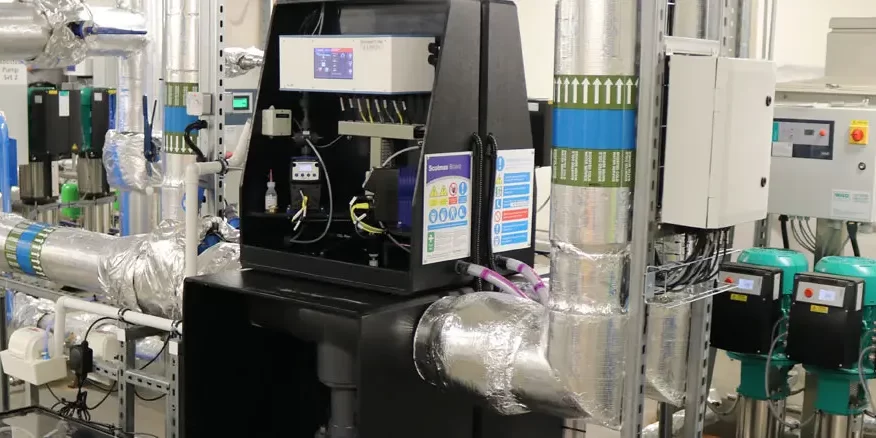Major issues at a large acute healthcare NHS Trust.
A Trust had been using ClO2 for several years as part of its Legionella Management Strategy, however microbial sampling revealed inconsistent performance of ClO2 generation systems, a lack of residual ClO2 and high levels of disinfection by products (DBP) in the water.
The incumbent suppliers were a generalist water treatment company, not ClO2 experts with inhouse knowledge and expertise.
Non-conformances were regularly flagged to the Water Safety Group. Most importantly, significant patient safety risk was noted, especially in wards treating vulnerable or immunosuppressed patients such as Maternity, SCBU, Renal and High Dependency.
The Options
- Replace ClO2 with another chemical dosing system. The Trust had already identified issues with sourcing through general water treatment companies rather than specialist suppliers.
- Continue with the existing system, carrying out additional testing to ensure safety standards were met. Budged costs for staff time and testing were considerable, and this was not considered a long term solution.
- Investigate more advanced dosing and control systems, capable of providing the consistent dosing support and reporting the Trust needed.
Our Solution
Replaced in situ ClO2 dosing equipment with new Scotmas Bravo WA ClO2 generators.
Improved disinfection purity and eliminated DBP (Sodium Chlorite and Sodium Chlorate). Scotmas systems are WRAS (Water Regulations Approval Scheme) and DVGW (Deutscher Verein des Gas und Wasserfaches) approved for water purity and produce no harmful by products.
Relocated monitoring points and implemented best practice testing and analysis through the Estates team.

